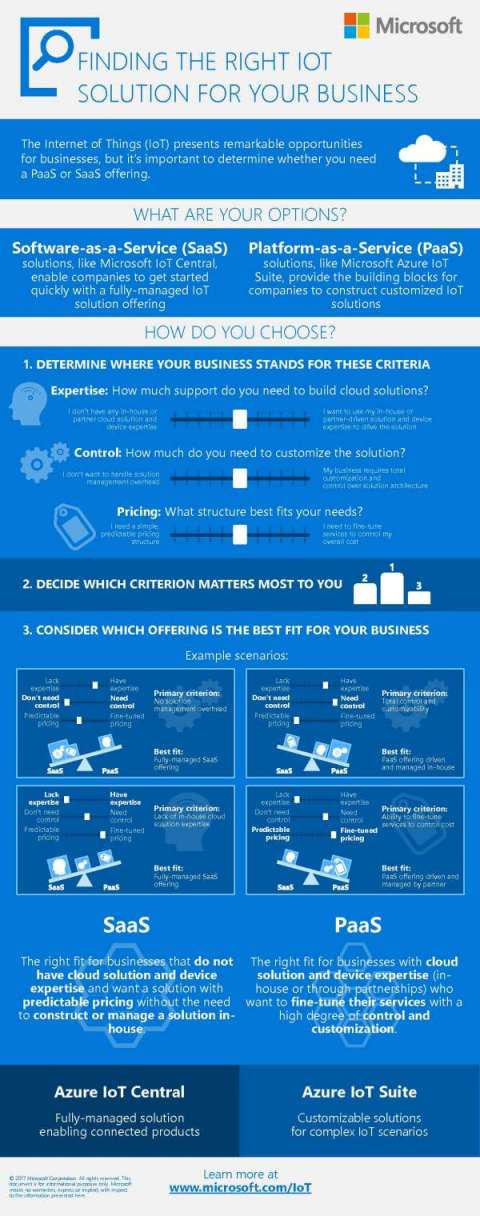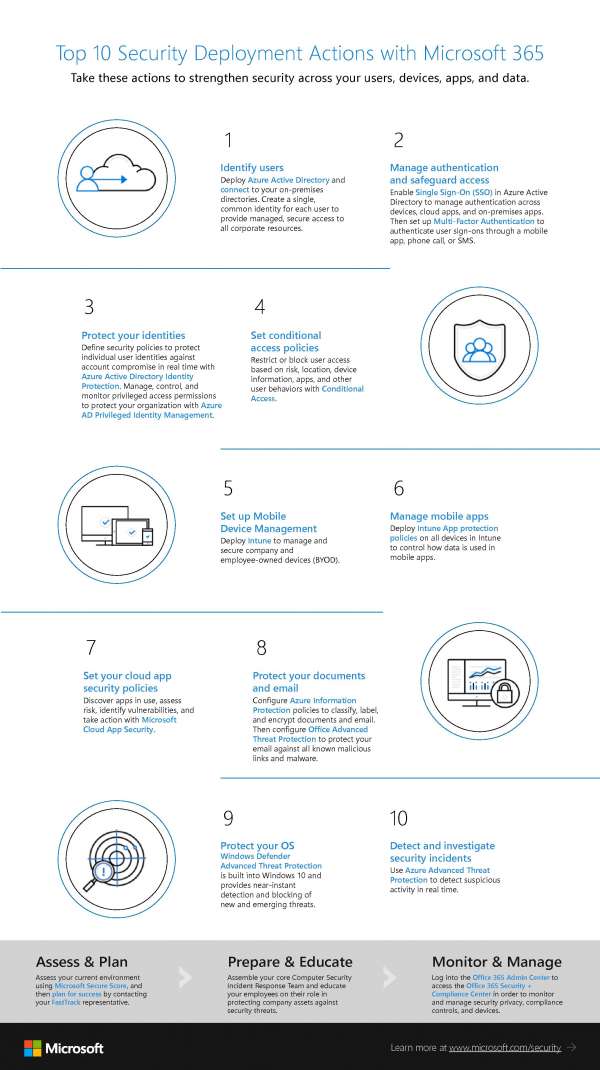More than 446 million records were exposed in over 1,200 data breaches within the SMB space in 2018. How secure is your business? Check out this article for four tips to accelerate business growth and remain secure.
Category: Uncategorized
Creating security controls for IoT devices at Microsoft
How are you leveraging the latest technology to meet your needs? Microsoft is using IoT to provide efficiency and convenience. With IoT, Microsoft monitors datacenters, controls smart building systems, and interacts with HoloLens devices. While you may have other needs, you can use that same technology to fulfill them.
At Avvenire Solutions, we know how to help your business connect devices and create the IoT system that will drive the transformation you need. Contact us today to learn more.
View: Creating security controls for IoT devices at Microsoft
Finding the right IoT solution for your business
Are you an expert when it comes to building cloud solutions? As it turns out, you don’t have to be. With the right SaaS solution from Azure, you can manage your device and cloud solutions with predictable or fine-tuned pricing and still have the level of control that makes you comfortable.
At Avvenire Solutions, we can help you determine whether you’re best fitted for SaaS or PaaS solutions. Contact us today to learn how we can help you drive transformation with Azure.
Customer Story: Think Up Consulting Overview
When Think Up Consulting, a brand strategy and change management firm, introduced Microsoft Teams, it was a big shift for the organization from a collaboration standpoint. They brought file sharing, team chat and project management together using Teams as the main hub for each project. With Teams, Think Up is creating a central hub, and with Office 365, they have a complete unified solution. By adopting Windows 10 and Office 365, Think Up customers have the reassurance and confidence of security.
We can help you do the same. Contact us to learn more.
IoT devices proliferate, from smart bulbs to industrial vibration sensors
How are you using IoT? One of the biggest uses for IoT in an industrial setting is preventive maintenance. Devices like vibration and wear sensors measure the stresses on and performance of factory equipment to help catch malfunctions before they happen. Now you can use the same software to run your devices as Fortune 500 companies, and Avvenire Solutions can help. We’re industry experts and have the knowledge you need to adopt and connect all of your IoT devices. Contact us today for more.
Don’t miss another post! Subscribe now.
Don’t let the upcoming end of support for Windows 7 and Office 2010 put productivity and customer data at risk. Go modern with Microsoft to unlock and foster better collaboration, remain secure and reduce costs.
Subscribe now to learn how Microsoft can help you go modern with advanced security and device management capabilities that increase productivity and safeguard business.
PCL Construction LLC
PCL Construction LLC uses IoT to connect their management with their jobsites. The devices alert builders and management to issues with construction. With the sensors, they can monitor the temperature, humidity, and pressure in over 483 units, something that would normally be done by hand. Now they can focus workers on more important things that drive value back to the company. At Avvenire Solutions, we can help you deliver the same results. Contact us today to learn more.
Customer Story: Think Up Consulting
Think Up Consulting is a young, fast-growing agency based in Greenville, South Carolina. The agency specializes in brand strategy, change management and strategic consulting to help global brands make deep, lasting connections with customers.
For Think Up, the ability to ensure seamless communication and reliable security while maximizing productivity are musts. To support these priorities, the company chose Office 365 to streamline internal processes and dramatically reduce the number of emails employees send.
A forward-thinking company, Think Up continues to explore and adapt new technology to help increase employee efficiency and better meet its customer’s needs.
We can help you do the same. Contact us to learn more.
Top 10 Security Deployment Actions with Microsoft 365
If you’re looking for a roadmap to a more secure system, we’ve got you covered. Check out this list to discover 10 actions you can take using the tools provided in Microsoft 365 to better protect your business from cybersecurity threats. And don’t forget, Avvenire Solutions is here to help you every step of the way.
Maximizing the impact of your IoT Proof of Concept
The Internet of Things (IoT) offers businesses opportunities for incredible savings and growth. However, an IoT solution may also require a significant up-front investment. At Avvenire Solutions, we can help you find the solution that fits your business needs and help you implement that technology to maximize your return. Contact us to learn more.














